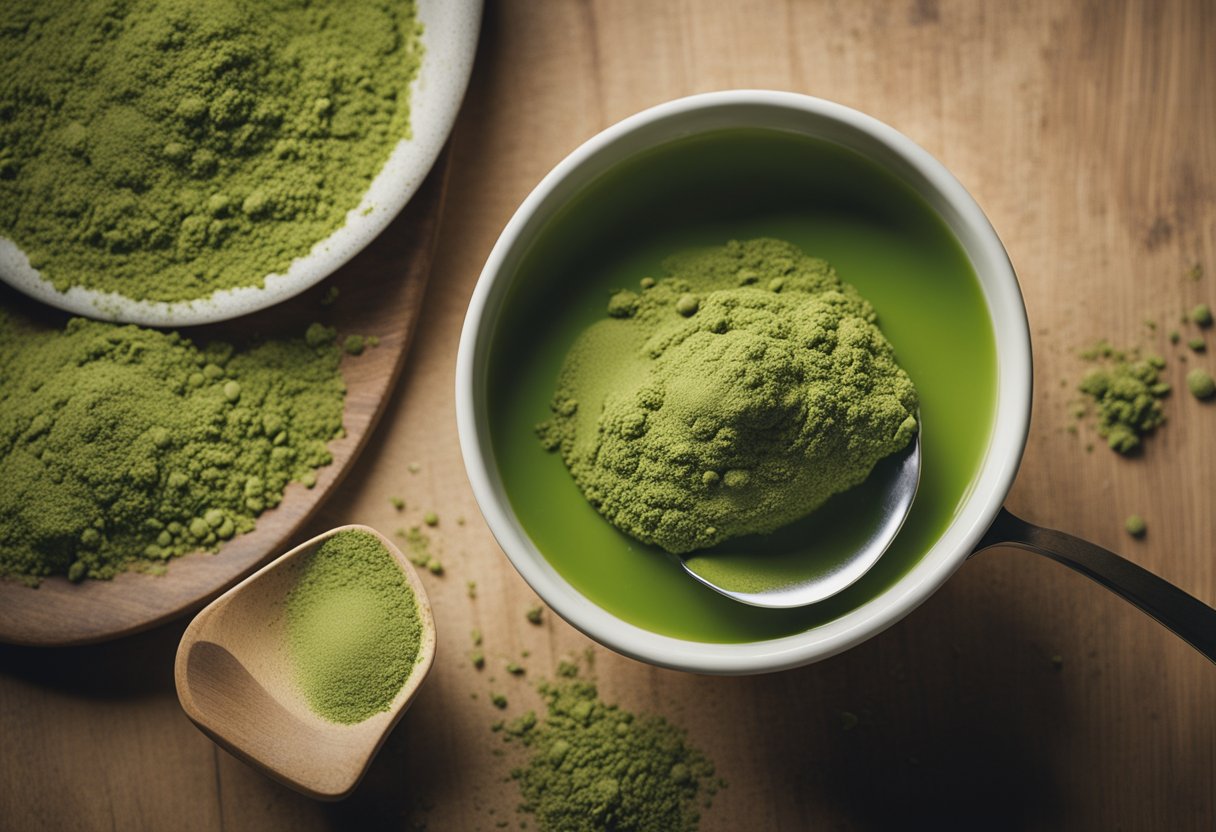
Matcha tea, the vibrant green beverage traditionally whisked to perfection, has a ceremony of its own that is both an art and a science. Its origins stretch back to ancient practices in Japan, where it’s an integral part of the culture. If you’re craving the serene experience and health benefits of matcha but don’t have the traditional bamboo whisk, or ‘chasen,’ fret not. Preparing it without one is not only possible but also simpler than you might think.
Understanding Matcha Tea
Discover how Matcha tea combines healthful properties with a rich cultural heritage, making it more than just a beverage.
Matcha Basics
Matcha is a finely ground powder made from specially grown and processed green tea leaves, originating from Japan. The leaves are shaded from direct sunlight for about three weeks before harvest, which increases chlorophyll levels and boosts the production of L-theanine and caffeine.
- Components of Matcha: Matcha contains antioxidants called catechins, which are believed to have cancer-fighting effects. A key antioxidant found in Matcha is EGCG (epigallocatechin gallate), known for its health benefits.
- Caffeine Content: Matcha has a unique blend of caffeine and L-theanine, which provides a sustained energy boost without the jitteriness that can come from coffee.
The Significance of Whisking in Traditional Matcha Preparation
Traditionally, preparing Matcha tea for a Japanese tea ceremony involves a bamboo whisk known as a chasen. The action of whisking with the chasen aerates the tea, giving it a smooth texture and creating a frothy layer on the surface.
- Traditional Method: Whisking Matcha in a zigzag motion breaks up clumps, ensuring a uniform consistency.
- Japanese Tea Ceremony: In a traditional Japanese tea ceremony, the whisking of Matcha is a ritualistic act representing respect, purity, and tranquility.
Alternative Whisking Tools and Techniques
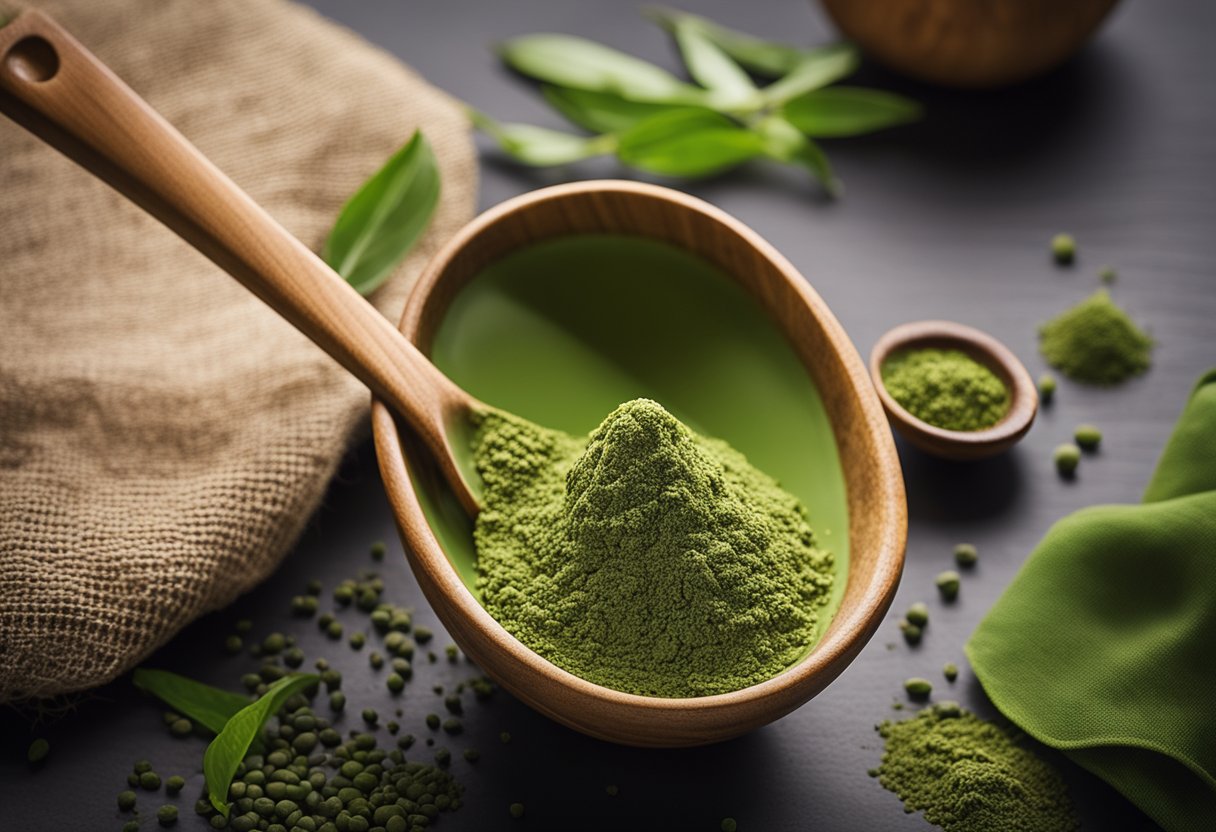
Making matcha tea without a traditional whisk can be just as effective with a few innovative tools you might have in your kitchen. Whether you use a milk frother, a shaker bottle, or common utensils like a fork or spoon, you can still achieve that desired frothy texture.
Milk Frother Method
If you have a milk frother at hand, you’re already on your way to a perfectly frothy matcha. Here’s how to do it:
- Heat the Milk: First, warm up your milk of choice without letting it boil.
- Add Matcha: Next, add your matcha powder to the warm milk.
- Froth: Use the frother to whisk the milk and matcha together until it’s rich and frothy.
Note: This method is quick and tends to produce the creamiest matcha.
Shaker Bottle Technique
For those times when a gym shaker bottle is more at hand than kitchen utensils, consider the following steps:
- Combine Ingredients: In your shaker bottle, mix matcha powder with warm water or milk.
- Shake Vigorously: Secure the lid and shake the bottle vigorously for 15-30 seconds.
- Pour and Enjoy: Open the lid carefully, as pressure can build up, and pour your matcha into a cup.
Important: Make sure the bottle is meant for hot liquids to avoid any accidents.
Simple Fork or Spoon Trick
Don’t underestimate the power of a humble kitchen fork or spoon; they can be quite effective:
- Stir: Place your matcha powder in a bowl. Pour in a small amount of warm water or milk.
- Whisk: Using the edge of a fork or the back of a spoon, rapidly whisk back and forth until the matcha is dissolved and a light layer of foam forms.
This method takes a bit more wrist action but gets the job done.
Making Matcha Without a Whisk
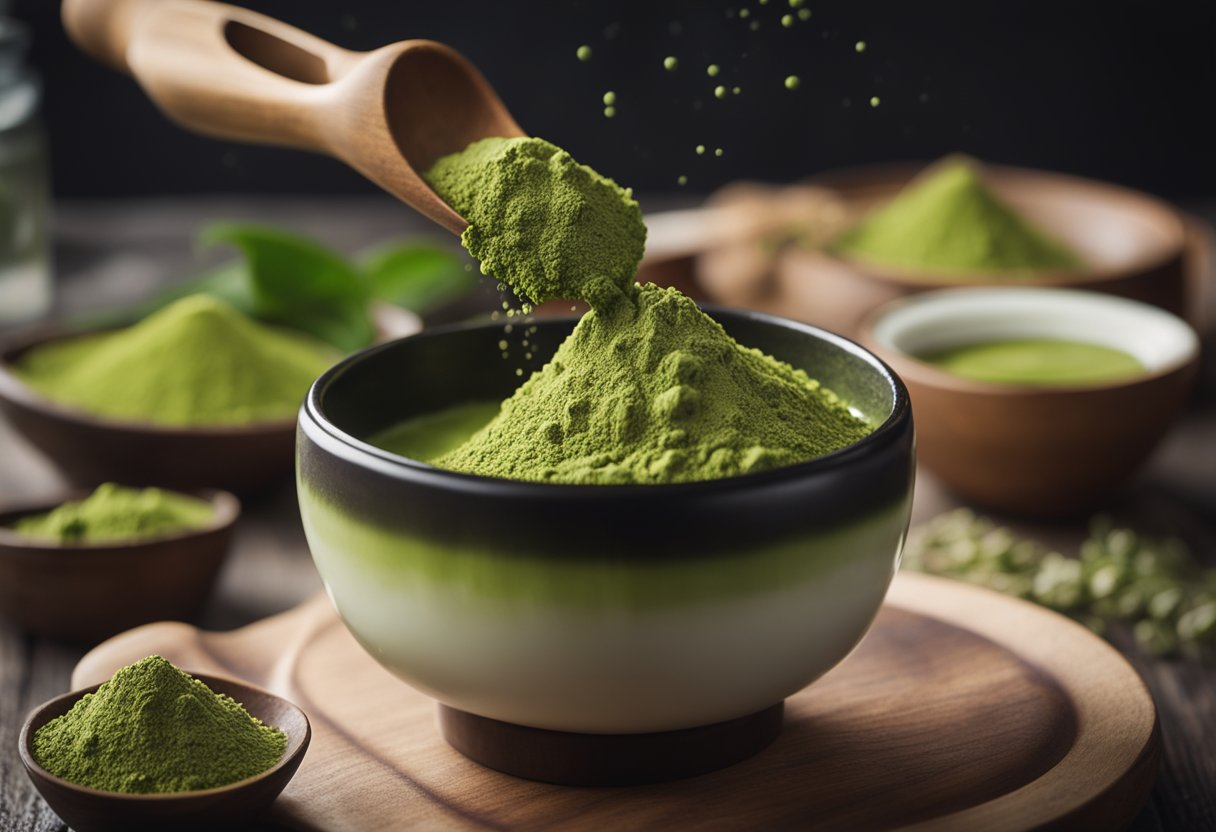
If you don’t have a traditional bamboo whisk, you can still make a delicious cup of matcha using common kitchen tools.
Blender Method
Using a blender, whether it’s a standard food blender or an immersion blender, allows for a smooth matcha mixture. Start by adding one teaspoon of matcha powder to your blender. Pour in about 60ml of hot water (not boiling, to preserve the nutrients of the matcha). Blend on low speed for 15-30 seconds until the surface appears frothy and lump-free.
Jar Shake Method
The Jar Shake Method involves a mason jar with a tight-fitting lid. First, sift your matcha powder into the jar using a strainer to prevent lumps. Then, add up to one cup of hot water. Secure the lid snugly and shake vigorously for about 15 seconds. The goal is to create a frothy layer on top, ensuring there are no clumps in your drink.
Strainer and Spoon Method
For a manual approach, use a strainer and spoon. Sift your matcha powder to remove any lumps. Then, add matcha to a cup along with a small amount of hot water. Using the back of a spoon, press the matcha against the sides of the cup, grinding and stirring until you get a smooth paste. Gradually add more hot water while stirring until you achieve a lump-free matcha mixture.
Enjoying Diverse Matcha Creations
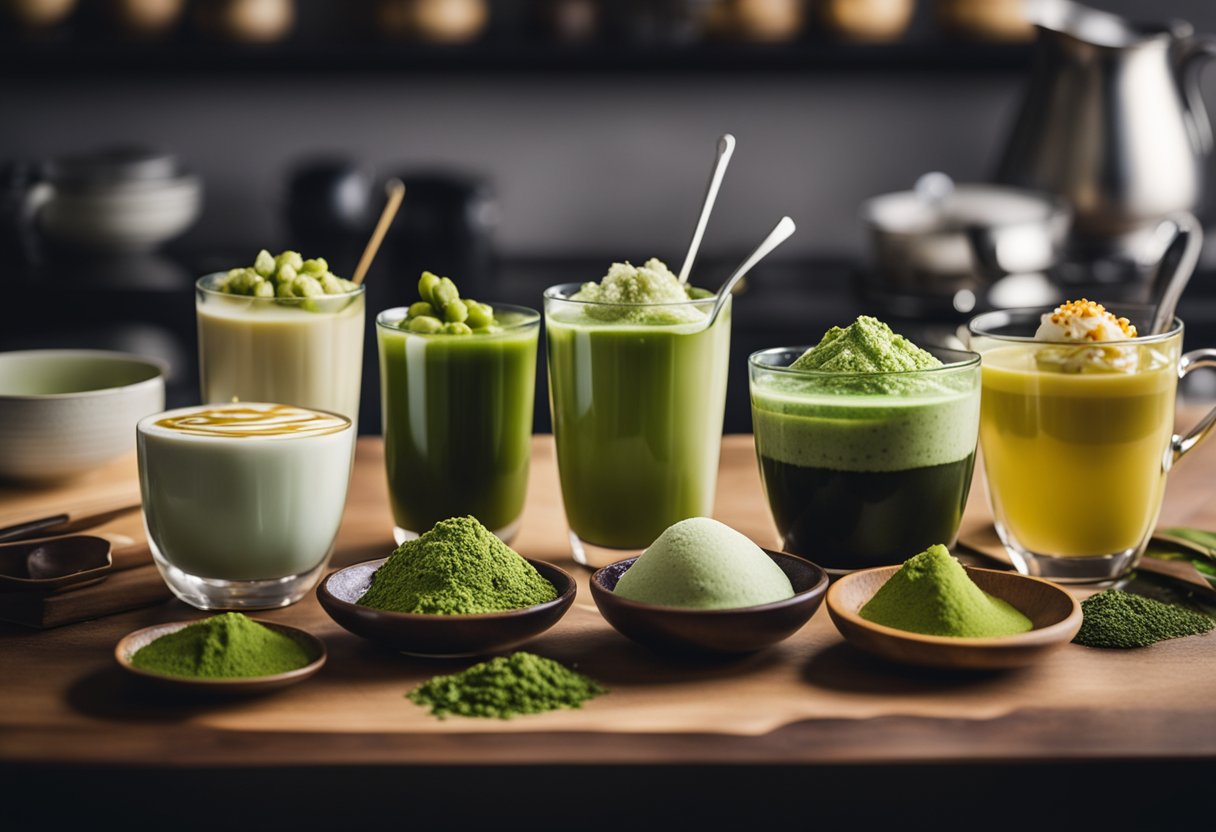
Exploring matcha beyond the traditional hot tea opens up a vibrant world of flavors. Here’s how you can enjoy matcha in various refreshing and delightful forms, from iced variations to creamy lattes and inventive cocktails.
Iced Matcha Variations
To create a refreshing iced matcha, start with two teaspoons of high-quality matcha green tea powder in a bottle. Add cold water, replace the lid, and shake until the mixture is smooth and frothy. For a touch of sweetness, mix in a teaspoon of honey or sugar before shaking. Pour over ice and serve immediately for a revitalizing cold brew matcha that can become a staple in your morning routine.
- Sweeteners: Honey or sugar
- Steps: Shake matcha with cold water; serve over ice
Matcha Tea Latte Tips
For a warm and comforting matcha tea latte, heat milk in a saucepan until just before it boils. In a cup, combine one to two teaspoons of matcha green tea powder with a small amount of hot water. Stir until there are no lumps. Pour the hot milk over the matcha paste, using a spoon to froth if desired. Adjust the sweetness to your taste with honey or sugar for a delightful matcha drink that’s both healthy and indulgent.
- Milk: your choice (dairy or non-dairy)
- Sweeteners: Honey or sugar
- Preparation: Combine matcha with hot water, then add milk
Matcha-Infused Cocktails
Matcha isn’t just for tea enthusiasts; it’s a versatile ingredient for creative cocktails. Combine high-quality matcha powder with a bit of hot water and stir until dissolved. Cool the mixture and add to your favorite cocktail recipes for a unique twist. For a botanical kick, blend the matcha mixture with Gin and a splash of orange juice for a matcha-infused cocktail that will surprise and delight your taste buds.
- Base spirit: Gin
- Mixer: Orange juice
- Method: Stir matcha in hot water, cool, and add to cocktails
Frequently Asked Questions
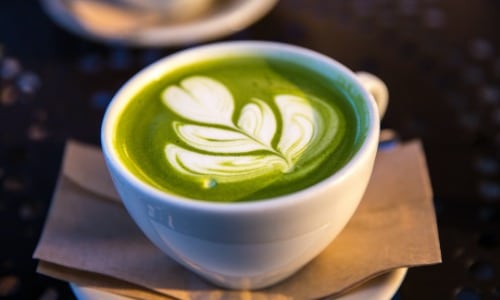
Making matcha tea without a traditional whisk can be straightforward once you know the right techniques and tools to use.
What can I use instead of a matcha whisk?
If you don’t have a matcha whisk, you can use a milk frother, electric mixer, or even a shaker. These alternatives can help to achieve a similar frothy texture.
Is it possible to prepare matcha tea using a fork?
Yes, you can use a fork to mix your matcha tea. Whisk vigorously in a zigzag motion until the tea is frothy.
How do I dissolve matcha powder completely?
Sift your matcha powder to avoid clumps. Then, stir briskly with your chosen tool in hot water just below boiling point until the matcha is fully dissolved.
Can I use a regular whisk for making matcha tea?
A regular kitchen whisk can work. Use it in the same way you would a bamboo whisk, whipping quickly in a W motion to create froth.
What is the correct amount of matcha powder for one cup of tea?
For one cup of tea, use about 1 to 2 teaspoons of matcha powder, depending on how strong you like your tea.
How to make a smooth matcha tea without a bamboo whisk?
Ensure your matcha is sifted and use hot water for dissolving. Whisk with your chosen tool until the surface is frothy and smooth without any visible clumps.
